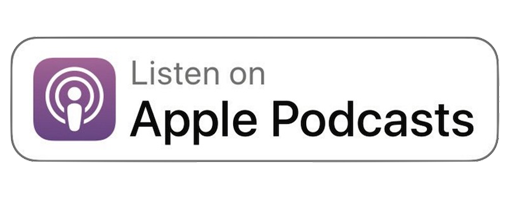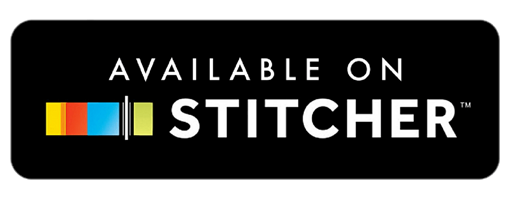Speak Clear English - Enroll Today
inglês para viagens:
Vocabulário de Aeroporto
Hoje vamos falar sobre um assunto essencial para suas viagens: Vocabulário relacionado ao Aeroporto. Quando você está em um aeroporto, é essencial que você conheça as situações comuns e o vocabulário que encontraria em um aeroporto.
Vamos elencar e exemplificar cada um dos tópicos citados anteriormente:
Situações comuns no aeroporto
– Solicitando informações:
Good morning. / Bom dia.
Good afternoon. / Boa tarde.
Good evening. / Boa noite (para iniciar uma conversa)
Good night. / Boa noite (para finalizar uma conversa)
Can I help you? / Posso te ajudar?
Please, what terminal is this? This is terminal two. / Por favor, que terminal é esse? Este é o terminal dois.
Where are the restrooms / toilets? / Onde ficam os banheiros?
Could you help me choose a good restaurant near here? / Você poderia me ajudar a escolher um bom restaurante perto daqui?
Would you help me get to the bank? / Você me ajudaria a chegar no banco?
– Fazendo o check-in:
Your ticket and passport, please. / Sua passagem e passaporte, por favor.
How much is it a plane/train ticket to…? / Quanto custa uma passagem de avião/trem para…
Are there any special cheap fares? / Há alguma promoção de passagens mais baratas?
Can I book a/two seat(s)? / Posso reservar um/dois lugar(es)?
I want a ticket to… (First class – Second class – Economic class). / Eu quero uma passagem para a… (Primeira classe – Segunda classe – Classe econômica).
Please put your bag on the scale. / Por favor, coloque a sua mala na balança.
How many bags are you checking? / Quantas malas você vai despachar?
Do you have any carry-on bags / hand luggage? / Você tem bagagem de mão?
– Dentro do avião:
Welcome aboard to the flight (number) from (origin) to (destination). / Bem-vindo a bordo do voo (número) de (origem) a (destino).
Please, put your carry-ons underneath the seat in front of you or in the overhead compartment. / Por favor, coloque suas malas de mão debaixo do assento à sua frente ou no compartimento de bagagem superior.
Keep your seats in the upright position. / Mantenha seus assentos na posição vertical.
Put your electronic devices in airplane mode. / Coloque seus dispositivos eletrônicos no modo avião.
Window seat or aisle seat? / Assento na janela ou no corredor?
This seat is close to the emergency exit. / Este assento é próximo à saída de emergência.
Would you like something to drink? We have coffee, tea and juice. / Você gostaria de algo para beber? Temos café, chá, água e suco.
Have a nice flight. / Tenha um bom voo.
– Chegando em um novo país:
Where is the information desk? / Onde fica o balcão de informações?
Where is the lugagge from the Brazil flight? / Onde está a bagagem do voo do Brasil?
My luggage has not arrived. / Minha bagagem não chegou.
My suitcase was damaged in transit. / Minha mala foi danificada na viagem.
Please, take my luggage to a taxi/cab. / Por favor, leve minha bagagem para um táxi.
What’s your flight number? / Qual é seu número de voo?
Are you in transit? / Você está em trânsito?
How long does it take? / Quanto tempo isso leva?
How long does it take from the hotel to the beach? / Quanto tempo leva do hotel para a praia?
It takes around three minutes on foot. / Leva por volta de três minutos a pé.
Can you help me find this adress? / Você pode me ajudar encontrar esse endereço?
How do I get to this address? / Como eu chego a esse endereço?
How do I get to the nearest bank around here? / Como eu chego ao banco mais próximo daqui?
How do I get to the soccer stadium from the hotel? / Como eu chego ao estádio de futebol saindo do hotel?
How do I get to the church? / Como eu chego à igreja?
How do I get to the mall on foot? / Como eu chego ao shopping à pé?
Vocabulário relacionado ao aeroporto
Airline (Linha aérea) – uma organização que presta um serviço público regular de transporte aéreo em uma ou mais rotas.
Airplane / Plane (Avião) – um veículo voador motorizado com asas fixas e um peso maior que o do ar que desloca.
Airport (Aeroporto) – um complexo de pistas e prédios para decolagem, pouso e manutenção de aeronaves civis, com instalações para passageiros.
Arrivals (Chegadas (voos que chegam ao aeroporto em que você está (pousos)) – a ação ou processo de chegada.
Aisle (Corredor (do avião) – uma passagem entre filas de assentos em um prédio como uma igreja ou teatro, um avião ou um trem.
Baggage / Luggage (Bagagem) – pertences pessoais embalados em malas de viagem.
Bag / Suitcase (Mala de despache) – um recipiente feito de material flexível com uma abertura na parte superior, usado para transportar coisas.
Blanket (Cobertor) – um grande pedaço de lã ou material semelhante usado como cobertura de cama ou outra cobertura para aquecer.
Boarding pass (Cartão de embarque) – cartão de embarque no avião, entregue ao passageiro no ato da emissão do bilhete ou no check-in no aeroporto.
Canceled (Voos ou conexões canceladas) – decidir ou anunciar que (um evento planejado) não acontecerá.
Check-in (Onde você confirma sua viagem e despacha as bagagens) – o ato de relatar a presença e registrar-se, normalmente em um aeroporto ou hotel.
Check-in desk (Balcão de check-in) – o ponto de boas-vindas, onde você se anuncia (em um aeroporto, hotel, etc.).
Delayed (flight) (Voos atrasados) – esteja atrasado ou lento.
Departures (Partidas – voos que partem do aeroporto em que você está (decolagens)) – a ação de partir, principalmente para iniciar uma jornada.
Departure gate (Portão de embarque) – o portão onde os passageiros embarcam.
Flight (Voo) – a ação ou processo de voar pelo ar.
Flight attendant (Comissário(a) de bordo) – um comissário ou aeromoça em uma aeronave.
Flight number (Número do voo) – um código para um serviço de companhia aérea que consiste em um designador de companhia aérea de dois caracteres e um número de 1 a 4 dígitos.
Final destination (Destino final) – um lugar que você chega no final de uma jornada depois de parar em vários pontos do caminho.
Gate (Portão de embarque) – barreira articulada usada para fechar uma abertura em uma parede, cerca ou cerca viva.
Hand luggage / Hand baggage / Carry-on (Bagagem de mão, que pode ser levada com você no embarque) – pequenas malas que os passageiros podem transportar em um avião ou ônibus.
Headset (Fone de ouvido) – um conjunto de fones de ouvido, normalmente com um microfone acoplado, usado especialmente em comunicações por telefone e rádio.
ID (Identification) (Documento de identidade) – identidade.
Landing (the plane) (Pousar / Aterrissar) – o ato de descer à terra ou outra superfície.
Loudspeaker / Speaker (Alto-falante) – um aparelho que converte impulsos elétricos em som, normalmente como parte de um sistema de som público ou equipamento estéreo.
Non-stop (Sem escala) – sem parar ou pausar.
Now boarding (Embarque iniciado) – quando um trem, ônibus ou avião está “embarcando”, significa que os passageiros estão entrando nele.
On time (flight) (Voos no horário previsto) – pontual; pontualmente.
Overhead compartment (Compartimento superior) – um de uma fileira de pequenos armários acima dos assentos de um avião, onde os passageiros podem guardar coisas durante o voo.
Overweight (Excesso de peso na bagagem) – acima de um peso considerado normal ou desejável.
Passport (Passaporte) – um documento oficial emitido por um governo, atestando a identidade e a cidadania do titular e dando-lhe o direito de viajar sob sua proteção de e para países estrangeiros.
Pilot (Piloto) – uma pessoa que opera os controles de voo de uma aeronave.
Seat (Assento, poltrona) – algo feito ou usado para sentar, como uma cadeira ou banquinho.
Security Check (Área de checagem de segurança onde há o raio-X) – uma investigação com o objetivo de ver se alguém é confiável.
Stewardess (Aeromoça) – uma mulher que é empregada para fornecer refeições e cuidar dos passageiros em um navio ou aeronave.
Take off (the plane) (Decolar) – quando uma aeronave, pássaro ou inseto decola, ele deixa o solo e começa a voar.
Ticket (Passagem) – um pequeno pedaço de papel ou cartão dado a alguém, geralmente para mostrar que pagou por um evento, viagem ou atividade.
Trolley (Carrinho para bagagem) – um pequeno veículo com duas ou quatro rodas que você empurra ou puxa para transportar objetos grandes ou pesados.
Visa (Visto) – uma marca oficial, geralmente feita em um passaporte, que permite que você entre ou saia de um determinado país
Window (Janela) – um espaço geralmente preenchido com vidro na parede de um edifício ou de um veículo, para permitir a entrada de luz e ar e para permitir que as pessoas dentro do edifício vejam.
Esqueci alguma palavra ou expressão que você deseja saber? Comente abaixo para solicitar que mais termos relacionados ao aeroporto sejam adicionados à lista.
Senhoras e senhores, última chamada para embarque para mais conhecimento em inglês.
Clique em um dos links a seguir para começar a falar um inglês mais claro!
1) CLEAR ENGLISH PRONUNCIATION VIDEO COURSE
2) ENGLISH VOCABULARY – AUDIO FILES & PDF – TOEFL & IELTS
3) IDIOMS IN CONVERSATION
4) JUMPSTART YOUR ENGLISH AUDIOBOOK + EBOOK
Fontes:
https://www.aluralingua.com.br/artigos/no-aeroporto-aprenda-o-vocabulario-de-viagem-em-ingles
https://www.solinguainglesa.com.br/conteudo/situacoes/sit_diarias21.php
https://englishlive.ef.com/pt-br/blog/ingles-para-viagens-vocabulario-para-o-aeroporto/
https://www.teclasap.com.br/aeroporto/
https://languages.oup.com/google-dictionary-en/
https://www.gymglish.com/en/gymglish/english-translation/
https://www.thefreedictionary.com/
https://en.wikipedia.org/wiki/Flight_number
https://www.macmillandictionary.com/dictionary
https://www.phrasemix.com/phrases/
https://www.merriam-webster.com/dictionary/
https://www.thefreedictionary.com/
https://dictionary.cambridge.org/pt/dicionario/ingles/
Até a próxima, Feliz Aprendizado!
Speak Clear English - Enroll Today

Jhessika Nascimento
Director of International Partnerships
Jhessika Nascimento is the Director of International Partnerships for Study With Andrea and lives in Brasilia, Brazil.
Jhessika is a bilingual teacher of English and Portuguese, studying for a Master's Degree in Strategic Management in Information Technologies at the Universidad Internacional Iberoamericana.
Graduation in Letters - Portuguese and English.
Postgraduate in Teaching in Higher Education.
Postgraduate in Risk Management and Cybersecurity.
Postgraduate Executive MBA in Process Management BPM-CBOK.
Postgraduate in Translation and Proofreading of Texts in English.
The following is a TOEFL Reading practice test to help you prepare for the Reading section of the TOEFL test.
Instructions: Read the sample passage below and then answer the questions that follow.
TOEFL Reading Practice Passage
Gorillas are ground-dwelling, predominantly herbivorous apes that inhabit the forest of central Sub-Saharan Africa. The genus Gorilla is divided into two species: the eastern gorillas and the western gorillas (both critically endangered), and either four or five subspecies. They are the largest living primates. The DNA of gorillas is highly similar to that of humans, from 95 to 99% depending on what is included, and they are the next closest living relatives to humans after the chimpanzees and bonobos.
Gorillas' natural habitats cover tropical or subtropical forest in Sub-Saharan Africa. Although their range covers a small percentage of Sub-Saharan Africa, gorillas cover a wide range of elevations. The mountain gorilla inhabits the Albertine Rift montane cloud forests of the Virunga Volcanoes, ranging in altitude from 2,200 to 4,300 metres (7,200 to 14,100 ft). Lowland gorillas live in dense forests and lowland swamps and marshes as low as sea level, with western lowland gorillas living in Central West African countries and eastern lowland gorillas living in the Democratic Republic of the Congo near its border with Rwanda.
(#1) Gorillas move around by knuckle-walking, although they sometimes walk upright for short distances, typically while carrying food or in defensive situations. (#2) A 2018 study investigating the hand posture of 77 mountain gorillas at Bwindi Impenetrable National Park (8% of the population) found that knuckle walking was done only 60% of the time, and they also supported their weight on their fists, the backs of their hands/feet, and on their palms/soles (with the digits flexed). (#3) Studies of gorilla handedness have yielded varying results, with some arguing for no preference for either hand, and others right-hand dominance for the general population. (#4)
The eastern gorilla is more darkly colored than the western gorilla, with the mountain gorilla being the darkest of all. The mountain gorilla also has the thickest hair. The western lowland gorilla can be brown or grayish with a reddish forehead. In addition, gorillas that live in lowland forest are more slender and agile than the more bulky mountain gorillas. The eastern gorilla also has a longer face and broader chest than the western gorilla. Like humans, gorillas have individual fingerprints. Their eye color is dark brown, framed by a black ring around the iris. Gorilla facial structure is described as mandibular prognathism, that is, the mandible protrudes farther out than the maxilla. Adult males also have a prominent sagittal crest.
A gorilla's lifespan is normally between 35 and 40 years, although zoo gorillas may live for 50 years or more. Colo, a female western gorilla at the Columbus Zoo and Aquarium, was the oldest known gorilla at 60 years of age when she died on 17 January 2017.
Questions
1. According to the passage, gorillas can live in
a. a variety of altitudes.
b. several different countries in Africa.
c. thick forests.
d. lowland forests only.
2. All of the following is true about gorillas EXCEPT
a. they primarily eat smaller animals.
b. they live in a forest habitat.
c. their genetics are similar to humans.
d. their diet consists of vegetation.
3. Look at the word predominantly in paragraph 1. The word predominantly in this passage refers to
a. impulsively
b. unfortunately
c. mainly
d. lastly
4. Look at the word inhabits in paragraph 2. The word inhabits in this passage refers to
a. lives in
b. protects
c. goes
d. works
5. The author implies that
a. most gorillas prefer using their left hand over their right.
b. gorillas rarely walk on their knuckles.
c. gorillas regularly walk upright for long distances.
d. studies haven't solidly proven which hand gorillas prefer using.
6. Why does the writer mention that the eastern gorilla also has a longer face and broader chest than the western gorilla?
a. To validate the importance a broad chest in western gorillas
b. To define the meaning of "broad"
c. To highlight a physical difference between types of gorillas
d. To demonstrate that most gorillas are identical in physical build
7. Which of the following statements is true for BOTH eastern and western gorillas.
a. Both eastern and western gorrilas are brown with red foreheads.
b. Both eastern and western gorrilas have unique fingerprints.
c. Both eastern and western gorrilas have thin hair.
d. Both eastern and western gorrilas have light brown eyes.
8. In Paragraph 3, look at the four numbers (#1, #2, #3, #4) that indicate where the following sentence would be added to the passage.
Such a range of hand postures was previously thought to have been used by only orangutans.
Where would the sentence best fit?
(View all the correct answers below.)
Great job! If you're ready to take your TOEFL preparation to the next level, go to StudyWithAndrea.com/TOEFL.
Answers: 1. d 2. a 3. c 4. a 5. d 6. c 7. b 8. #3
Click on one of the following links to start speaking clearer English!
1) TOEFL MASTER CLASS
2) free mini-course "punctuation mistakes to avoid"
3) Clear English Pronunciation Video Course
4) English Vocabulary - Audio Files & PDF - TOEFL & IELTS
About Andrea
Andrea Giordano is the founder of StudyWithAndrea.com and has taught more than 1,000,000 students from 180 countries. Andrea holds a Master of Education (TESOL) from Shenandoah University, and is the former Executive Director of TESOL and ESL programs at Campbellsville University. Andrea is a proven leader in online English teaching and is driven by her passion to help you speak English clearly.





